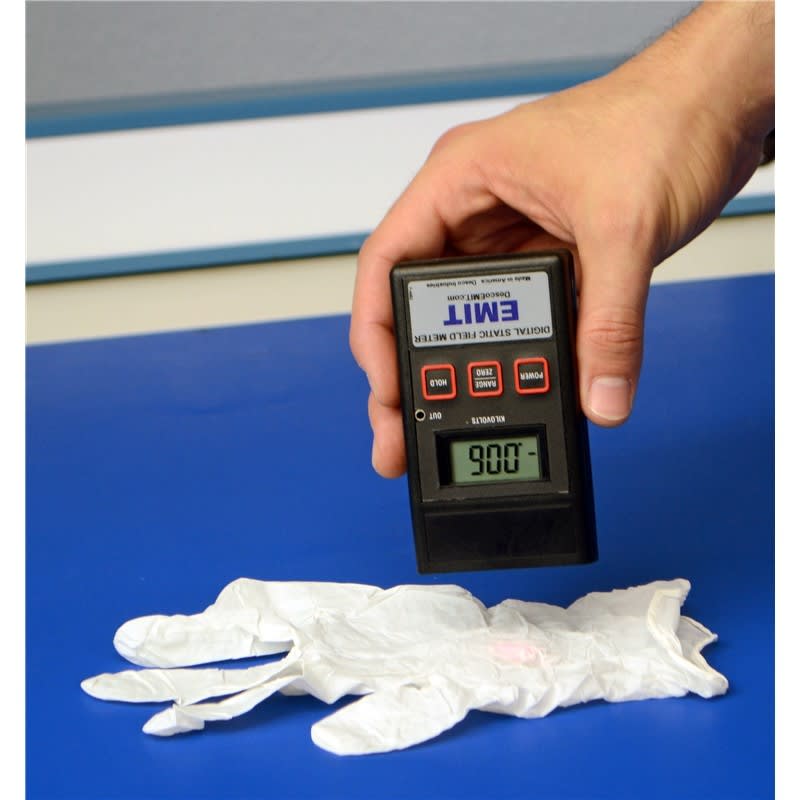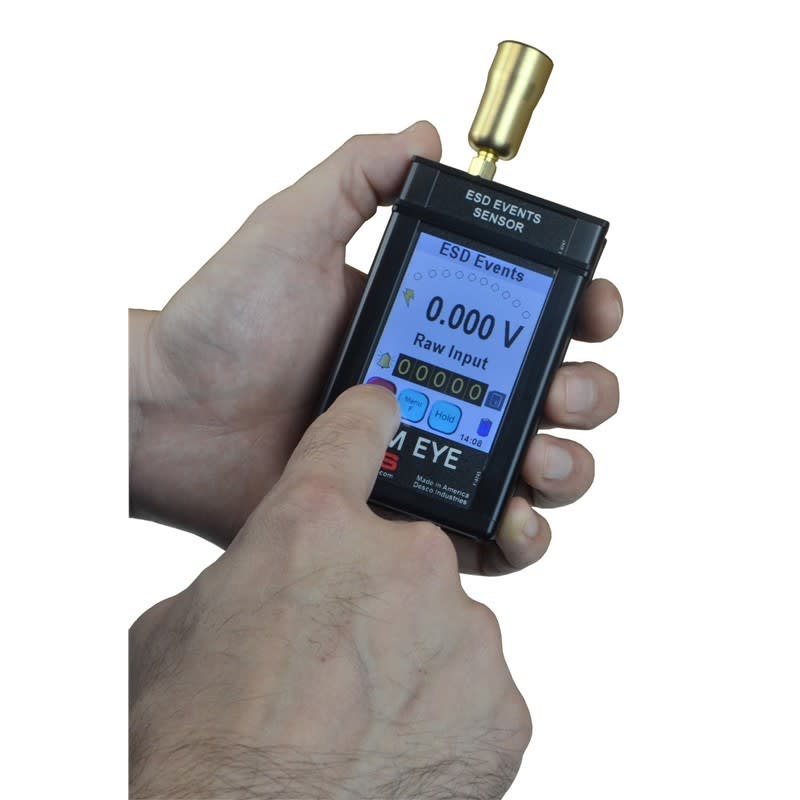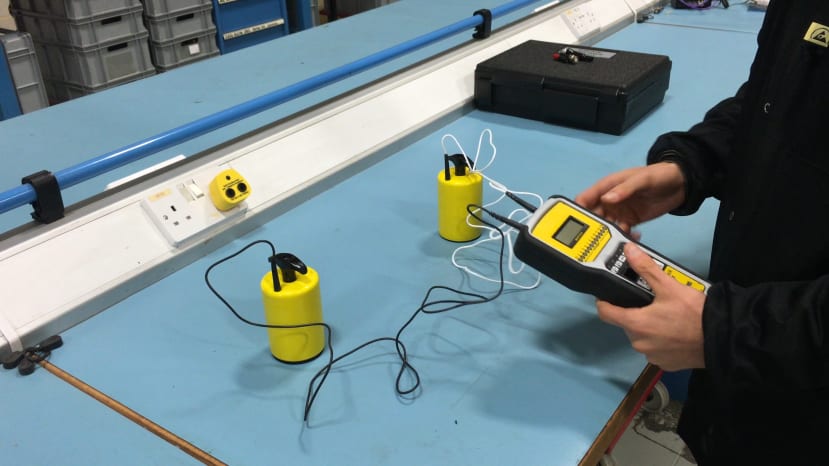How to measure the effectiveness of your ESD Control Programme
Follow articleHow do you feel about this article? Help us to provide better content for you.
Thank you! Your feedback has been received.
There was a problem submitting your feedback, please try again later.
What do you think of this article?
Introduction
It is now well established that electronic devices and systems can be damaged by exposure to high electric fields as well as by direct electrostatic discharges. While good circuit layout and on-board protection may reduce the risk of damage by such events, the only safe action at present is to ensure that devices are not exposed to levels of static electricity above the critical threshold.
This can only be achieved by introducing a static control programme which usually involves setting up an ESD Protected Area (EPA) in which personnel are correctly grounded and all materials e. g. flooring, bench tops etc. meet the of the ESD Standard. However, setting up an EPA does not of itself guarantee a low static environment. Production procedures may change, new materials may be introduced, the performance of older materials may degrade and so on.
To ensure the effectiveness of any static control programme it is important that regular measurements are carried out:
- to determine the sensitivity to ESD of devices being produced or handled.
- to confirm that static levels are lower than the critical level, and that new or modified work practices have not introduced high static levels.
- to ensure that both new and existing materials in the EPA meet the necessary requirements.
Only after an 'operational baseline' has been established by regular auditing will it become possible to identify the origin of unexpected problems arising from the presence of static.
1. Determining the sensitivity of ESDs
The bottom line is: you need to know what you’re dealing with before you can create an action plan. Only once you know the sensitivity of the items you are handling, can you work towards ensuring you’re not exceeding those levels.
Part of every ESD control plan is to identify items in your company that are sensitive to ESD. At the same time, you need to recognize the level of their sensitivity. As explained by the ESD Association, how susceptible to ESD a product is depends on the item’s ability to either:
- dissipate the discharge energy or
- withstand the levels of current.
For further information, check out this post.
2. Measurements to prove the effectiveness of an ESD Control Programme
Measuring electrostatic quantities poses rather special problems because electrostatic systems are generally characterised by high resistances and small amounts of electrical charge; the latter being true despite the dramatic effects often associated with static. Consequently, conventional electronic instrumentation cannot normally be used.
Electrical Field
Wherever electrostatic charges accumulate, they can be detected by the presence of an associated electric field. The magnitude of this field is determined by many factors, e. g. the magnitude and distribution of the charge, the geometry and location of grounded surfaces and also the medium in which the charge is located. “The current general view of experts is that the main source of ESD risk may occur where ESDS can reach high induced voltage due to external fields from the clothing, and subsequently experience a field induced CDM type discharge.” [CLC TR 61340-5-2 User guide Garments clause 4.7.7.1 Introductory remarks]
Using a Digital Static Field Meter (776-8321) to test static fields
A static field meter is often used for ESD testing of static fields. It indicates surface voltage and polarity on objects and is therefore an effective problem solving tool used to identify items that are able to be charged.
A field meter can be used to:
- verify that automated processes (like auto insertion, tape and reel, etc) are not generating charges above acceptable limits.
- measure charges generated by causing contact and separation with other materials.
- demonstrate shielding by measuring a charged object and then covering the charged item with an ESD lab coat or shielding bag. Being shielded the measured charge should be greatly reduced.
ESD Events
ESD events can damage ESD sensitive items and can cause tool lock-ups, erratic behaviour and parametric errors. An ESD Event Detector like the SCS EM Eye (838-1158) will help detect most ESD events. It detects the magnitude of events and using filters built into the unit, it can provide approximate values for some ESD events for models (CDM, MM, HBM) using proprietary algorithms.
Using the SCS EM Eye ESD Event Meter (838-1158) to detect ESD Events
Solving ESD problems requires data. A tool counting ESD events will help carry out a before-and-after analysis and will prove the effectiveness of implementing ESD control measures.
3. Checking materials in your EPA
When talking about material properties, the measurement you will most frequently come across is “Surface Resistance”. It expresses the ability of a material to conduct electricity. It is therefore related to current and voltage. In fact, the surface resistance of a material is the ratio of the voltage and current that’s flowing between two pre-defined electrodes.
It is important to remember that the surface resistance of a material is dependent on the electrodes used (shape as well as distance). If your company implements an ESD control programme compliant to the ESD Standard EN 61340-5-1, it is therefore vital to carry out surface resistance measurements as described in the Standard itself. For more information on the definition of resistance measurements used in ESD control, check out this post.
A company’s compliance verification plan should include periodic checks of surfaces measuring:
- Resistance Point-to-Point (Rp-p) and
- Resistance-to-ground (Rg).
Measuring Surface Resistance of worksurface matting using a Digital Surface Resistance Meter Kit (877-2536)
Surface resistance testers can be used to perform these tests in accordance with EN 61340-5-1 and its test method IEC 61340-2-3; if these measurements are within acceptable ranges, the surface and its connections are good. For more information on checking your ESD control products, catch-up with this and this post. This 2-part series goes into depth as to what products you should be checking in your EPA and how they should be checked.
Conclusion
Measurements should form an integral part of any ESD control programme. High quality instruments are available commercially for measuring all the parameters necessary for quantifying the extent of a static problem. We hope the list above has provided an introduction to the techniques most commonly used.




